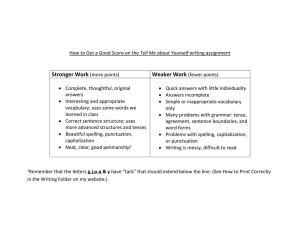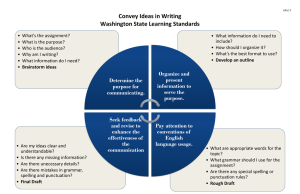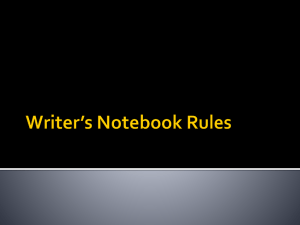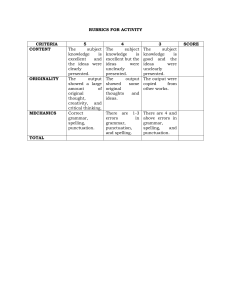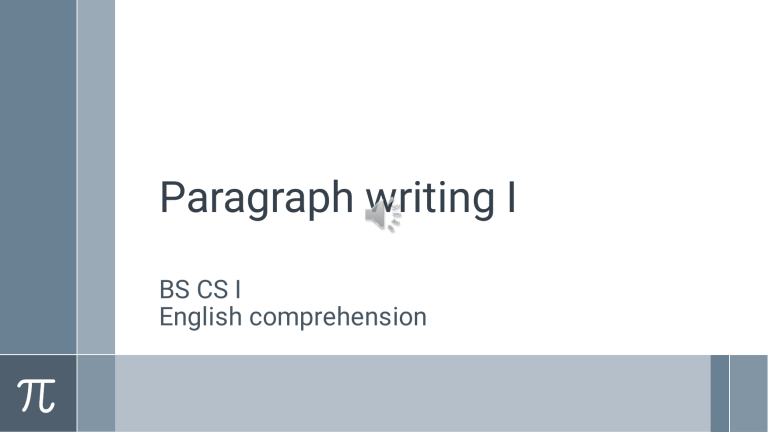
Paragraph writing I BS CS I English comprehension The writing process 5 steps of effective writing A. Prewriting: 1. Pondering, 2. Brainstorming, 3. Discussing, 4. Drawing Pictures (if necessary), 5. Webbing, 6. Organizing. B. Drafting: 1. Record your thoughts on paper. 2. Follow an outline or web from your prewriting and fill in the details. 3. Double-space. 4. DON’T STOP to look up spelling or punctuation/ capitalization rule ! C. Revising: 1. Read your writing aloud to yourself or someone else. 2. Make changes, additions, and deletions, as necessary. 3. Repeat until you are satisfied with the outcome ! D. Editing: 1. Make corrections in punctuation capitalization spelling and grammar. 2. Reading your work should be effortless. E. Publishing: › Share your writing with others ! 1. Read aloud. 2. Act it out. 3. Illustrate your story. 4. Post it online. 5. Try to get published! 6. Listen to someone else read it. Essential Ingredients of writing. Five essential rules of good writing style by Dr. Stephen Wilbers Cont… A. CENTRAL IDEA I. II. Purpose or central idea is sufficiently limited for meaningful discussion. Central idea is clearly stated, normally in the opening. III. All subordinate ideas relate clearly to the central idea. B. ORGANIZATION i. Introduction orients the reader to the central idea and the line of reasoning. ii. Material is arranged in a logical and coherent sequence; subordinate ideas are effectively identified. iii. Transitions are clear and helpful. iv. Conclusion or closing summarizes the argument, emphasizes the central idea, and leaves the reader with a sense of completion. Cont… C. SUPPORTING MATERIAL D. EXPRESSION, WORD CHOICE, AND POINT OF VIEW I. I. Examples are relevant, specific, detailed, sufficient, and persuasive. II. Quotations support the argument. Word choice is clear, specific, accurate, unassuming, and free of clichés and misused jargon. II. Sentences are free of wordiness and ambiguity. (Cont…) E. SPELLING, GRAMMAR, AND PUNCTUATION I. Spelling, including technical terms and proper names, is correct. II. Correct words are used to convey the intended meaning. III. Generally accepted rules of grammar and syntax are followed, including pronoun/noun agreement, subject/verb agreement, appropriate verb tense, pronoun case, possessive forms, parallel construction, etc. IV. Punctuation, particularly comma placement, reflects standard usage. V. Copy is free of mechanical errors and mistakes in proofreading. Your feedback is welcomed!
